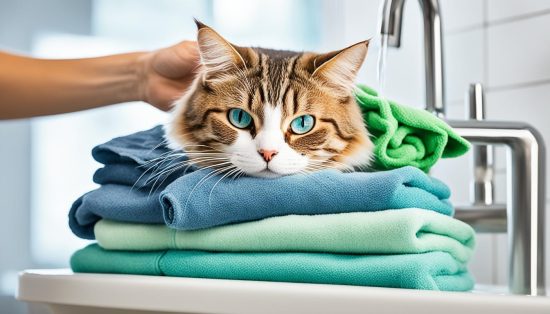Why Does My Cat Lay on His Back? Reasons Explained
Uncover the endearing reasons behind your cat’s back-lying behavior and what it reveals about their trust and affection for you.
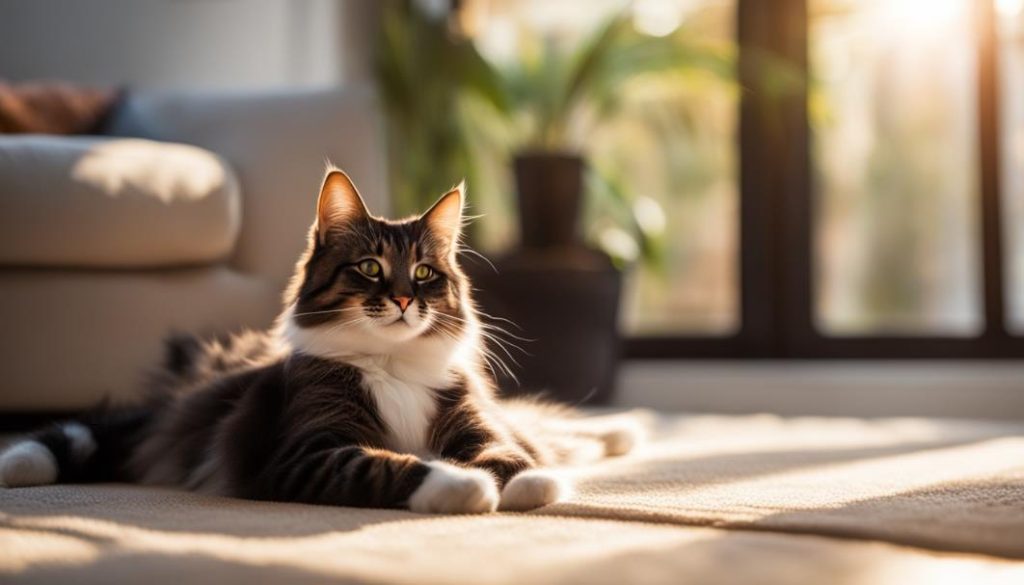
Have you ever wondered why your cat loves to lay on its back and expose its belly? It’s a common behavior that many cat owners find intriguing and adorable. But what does it really mean when a cat adopts this vulnerable position? And how can you tell if your cat loves you when it shows you its belly?
In this blog, we will delve into the reasons behind your cat’s back-laying behavior. We will uncover the fascinating insights it provides about their trust and comfort level with you. By understanding why does my cat lay on his back, you can deepen your bond with your feline companion and ensure their overall happiness and well-being.
So, are you ready to uncover the secrets behind your cat’s belly show? Let’s explore the fascinating world of feline behavior and decode the hidden messages behind your cat’s back-laying habits.
Understanding Your Cat’s Back-Lying Behavior
The Belly as a Sign of Trust and Comfort
When a cat lies on its back, it often exposes its belly, which is a vulnerable and sensitive area. This behavior is a sign of trust and comfort, as cats only reveal their bellies to someone they feel safe with. Examining the meaning behind a cat’s supine position can provide insights into their emotional state and the strength of their bond with their owner.
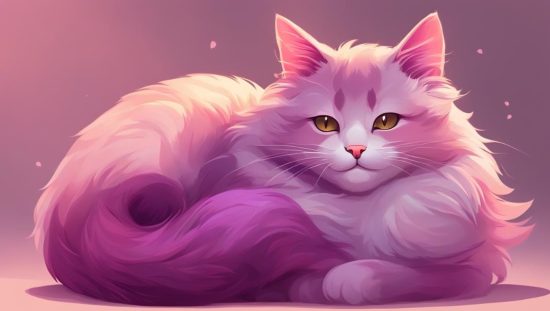
Dissecting the Meaning Behind a Cat’s Supine Position
When a cat chooses to lay on its back, it signifies a state of relaxation and contentment. By exposing their belly, cats are expressing their trust in their environment and the individuals around them. It is a vulnerable position where they feel secure enough to let their guard down.
Understanding the significance of this behavior can help pet owners build a stronger connection with their feline companions. When a cat feels comfortable enough to expose its belly, it shows that it trusts and values its bond with its owner. It is important to respect the cat’s vulnerability and handle it with care in these moments.
Why Does My Cat Lay on His Back?
Understanding your cat’s behavior can provide valuable insights into their needs and emotions. One intriguing behavior that many cat owners have noticed is when their feline companion lays on their back. While trust and comfort are major factors behind this behavior, there are other reasons why cats choose to assume this position. Cats are known for their temperature-sensitive nature. Exposing their belly and stretching out on their back can cool down or warm up their body depending on the surrounding temperature.
Like humans, cats also experience moments of relaxation and enjoy lounging around. Laying on their back with their paws up in the air is a way to unwind and fully release any tension. Cats have a natural instinct to stretch their muscles and keep their bodies flexible. Laying on their back allows them to stretch out their limbs, back, and belly, promoting overall physical well-being.
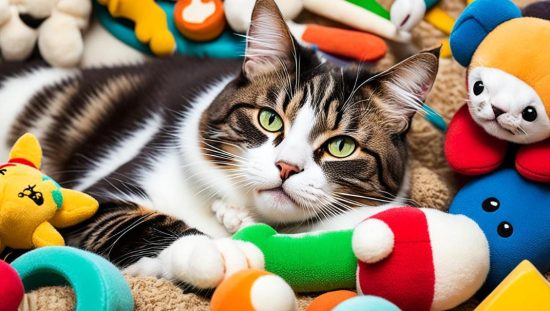
By observing your cat’s behavior and paying attention to their body language, you can gain a better understanding of why they choose to lay on their back. Whether it’s to regulate their temperature, relax, or stretch, embracing and accommodating their behavior can contribute to a happier and healthier feline companion.
Deciphering Cat Body Language for Clues
Cats are fascinating creatures that communicate not only through vocalizations but also through their body language. Understanding cats’ subtle signals can provide valuable insights into their emotions, needs, and overall well-being. Paying attention to your cat’s body language can strengthen your bond and ensure a harmonious relationship with your feline companion.
Signs That Your Cat Feels Happy and Content
When your cat feels happy and content, their body language will reflect this positive state. Here are some key signs to look out for:
- A happy cat will have a loose and relaxed body posture, without any signs of tension or stiffness.
- Cats will often narrow their eyes and give you a slow blink, indicating that they feel safe and trust you.
- A cat with an upright tail and a gentle curve at the tip typically feels content and confident.
- This familiar sound signifies that your cat is content and relaxed in your presence.
- Cats that are feeling happy and content will exhibit playful behavior, such as chasing toys or engaging in gentle wrestling with their feline companions.
Remember that every cat is unique, and their individual personalities may influence how they express their happiness. Paying attention to your cat’s specific body language cues will help you better understand their unique expressions of joy and contentment.
Reading the Signs of Annoyance in Feline Behavior
While it’s lovely to see your cat happy and content, it’s equally important to be aware of signs that indicate annoyance or discomfort. Here are some common body language signals that may suggest your cat is annoyed:
- If your cat’s tail is rapidly flicking back and forth, it’s a sign that they are feeling annoyed or agitated.
- Cats will flatten or pin their ears back against their heads when they are irritated or upset.
- Annoyed cats may exhibit dilated pupils, which indicate heightened arousal or agitation.
- Vocalizations like growling or hissing are clear indicators that your cat is feeling annoyed, threatened, or uncomfortable.
- If your cat swats at you or scratches when you pet it, it’s a sign that it has reached its tolerance threshold and is feeling irritated.
Understanding these signs of annoyance can help you modify your behavior and environment to alleviate any sources of discomfort for your cat. Additionally, it’s crucial to provide them with a safe, quiet space where they can retreat when they need a break from stimulation or interaction.
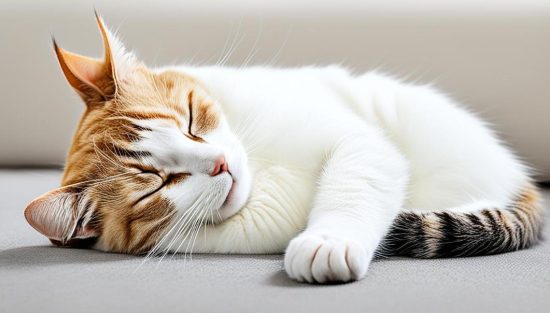
| Signs of Happiness and Contentment | Signs of Annoyance and Discomfort |
|---|---|
| Relaxed posture | Tail flicking |
| Soft eyes and slow blinking | Ears flattened or pinned back |
| Upright tail with a slight curve at the tip | Dilated pupils |
| Purring | Growling or hissing |
| Playfulness | Swatting or scratching |
Cat Sleeping Positions and Their Implications
Cats have various sleeping positions, and each position carries its own implications and meaning. Understanding why cats favor certain sleeping spots and poses can give you insights into their sense of comfort, safety, and protection. Exploring the protective nature of cat sleep behaviors can also shed light on their instincts and natural tendencies.
Why Cats Favor Certain Sleeping Spots and Poses
When it comes to choosing their sleeping spots, cats have their preferences, just like humans do. Some cats may prefer to sleep in elevated areas, such as on bookshelves or on top of furniture, as it allows them to survey their surroundings and feel secure. Others may choose cozy corners or enclosed spaces, like under beds or in closets, where they can feel hidden and protected.
The sleeping positions that cats adopt can also reveal their comfort levels and personality traits. For example, a cat that curls up tightly in a ball may be seeking warmth and security, while a cat that stretches out fully may be enjoying a deep and uninterrupted sleep.
The Protective Nature of Cat Sleep Behaviors
Cat sleep behaviors serve a protective function, reflecting their instincts and natural tendencies. One common sleep behavior is the “loaf” position, where a cat curls up tightly with their tail wrapped around their body. This position helps them conserve body heat and protect vulnerable areas, such as the abdomen and vital organs.
Another protective sleep behavior is the “cat ball” position, where a cat curls up with their head tucked in and their tail covering their face. This position helps shield their face and eyes from potential dangers while they sleep, allowing them to rest without worry.
Some cats may also exhibit a unique sleep behavior known as “half-open eyes.” This sleeping position, where cats appear to be half-awake with their eyes slightly open, helps them stay alert and aware of their surroundings while still getting much-needed rest.
To visually illustrate the different cat sleeping positions and their implications, take a look at the following table:
| Sleeping Position | Implications |
|---|---|
| The Loaf | Cat seeks warmth and security while protecting vulnerable areas. |
| The Cat Ball | Cat shields face and eyes from potential dangers during sleep. |
| Half-Open Eyes | Cat stays alert and aware of surroundings while resting. |
Comfort and Temperature Regulation in Cat Nap Choices
Cats are known for their unique napping preferences. Just like humans, cats seek comfort and relaxation during their rest periods. By understanding why cats choose specific sleeping spots and positions, you can create an environment that caters to their comfort needs. Providing a comfortable bed or a cozy blanket in their favorite spot can significantly affect their napping habits, ensuring they have a peaceful and restful sleep.
In addition to comfort, cats also utilize their naps to regulate their body temperature. Unlike humans, cats cannot sweat to cool themselves down. Instead, they rely on their surroundings to maintain the optimal body temperature. You may notice that your cat prefers sleeping in warm areas during colder months and seeks out cooler spots during warmer seasons. By paying attention to their temperature regulation needs, you can ensure their well-being and provide them with a comfortable environment that supports their thermal comfort.
Creating a comfortable and temperature-regulated napping environment for your cat is essential for their overall health and happiness. It allows them to recharge and rejuvenate, creating a more content and relaxed cat. So, consider their preferences and adjust their sleeping area accordingly. By catering to their comfort needs and ensuring a suitable temperature, you can provide your furry friend with the ideal space for their much-needed naps.
FAQs on why does my cat lay on his back
What does it mean when a cat lays on its back and shows its belly?
When a cat lays on its back and shows its belly, it is a sign of trust and relaxation. It indicates that the cat feels comfortable and safe in its environment.
How can I tell if my cat loves me?
Cats show their love in various ways, including laying on your back. Other signs of affection can include head bumps, purring, kneading, and bringing you gifts.
Why is understanding cat behavior important?
Understanding cat behavior allows you to interpret their needs and emotions better, strengthening the bond between you and your feline companion.
What are the signs that indicate a happy and content cat?
Signs of a happy and content cat include relaxed body posture, purring, kneading, and a willingness to be near and interact with you.
How does cat behavior reflect their overall health?
Changes in cat behavior can be an indicator of underlying health issues or discomfort. Monitoring their behavior allows you to identify potential problems and seek appropriate veterinary care.
Why do cats choose specific napping spots?
Cats choose specific napping spots for comfort and to regulate their body temperature. They may seek out warm or cool areas, depending on their preferences and the current weather.



